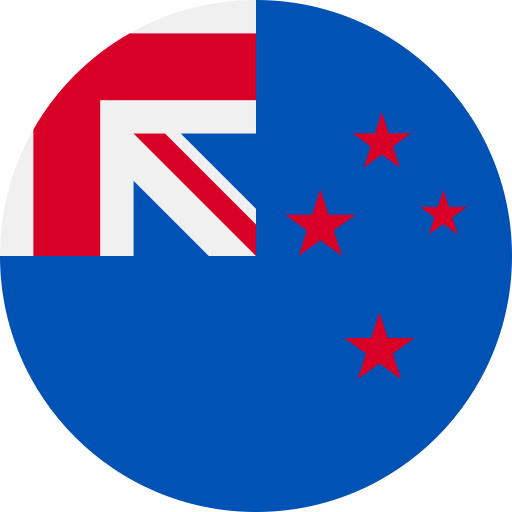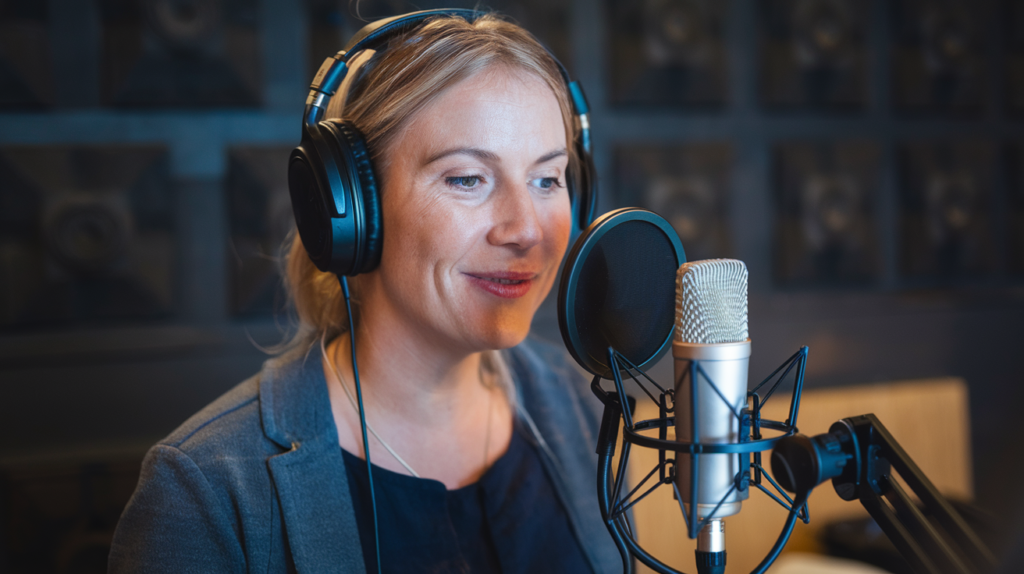Key Takeaways
- Linguistic Diversity: New Zealand is home to over 200 languages, with a rich tapestry of cultures that significantly influences its media landscape.
- Bilingual Programming: Television shows often integrate English and Māori to promote inclusivity, respect indigenous culture, and engage diverse audiences.
- Cultural Representation in Film: Indigenous languages like Māori enhance the authenticity of films, fostering connections with local communities while educating global viewers about cultural traditions.
- Print Media Engagement: Newspapers and magazines increasingly publish multilingual content, amplifying minority voices and ensuring accurate representation across different cultures.
- Digital Media Impact: Social media, podcasts, and streaming platforms celebrate linguistic diversity by featuring multilingual content that resonates with various cultural identities.
- Community Connection: By incorporating diverse languages into all forms of media, New Zealand fosters a sense of belonging among its residents and sets an example for embracing multiculturalism.
Ever wondered how New Zealand’s linguistic diversity shapes its media landscape? With over 200 languages spoken, the rich tapestry of cultures influences everything from television shows to radio broadcasts. This vibrant mix not only reflects the country’s unique identity but also presents a challenge: how can media effectively represent such a diverse population?
Overview of Linguistic Diversity in New Zealand
New Zealand boasts rich linguistic diversity, with over 200 languages spoken among its population. This variety reflects the country’s complex history and cultural identity, significantly influencing its media landscape.
Historical Background
New Zealand’s linguistic heritage traces back to Māori, the language of the indigenous people. The arrival of European settlers introduced English as a dominant language. Over time, other languages such as Samoan, Mandarin, Hindi, and French emerged due to immigration patterns. These historical influences contribute to a vibrant tapestry of languages that coexist today.
Current Language Statistics
In contemporary New Zealand, approximately 25% of residents speak a language other than English at home. Māori holds official status alongside English and is integral to national identity. Statistical data shows that around 160,000 people speak Māori fluently. Additionally, several Pacific languages rank among the top ten spoken languages in the country.
| Language | Estimated Speakers |
|---|---|
| English | 3 million |
| Māori | 160,000 |
| Samoan | 50,000 |
| Mandarin | 30,000 |
| Hindi | 25,000 |
This statistics highlight how diverse voices enrich New Zealand’s media formats—television programs often incorporate multiple languages to reach wider audiences while accurately representing cultural narratives.
Representation in Television
New Zealand’s television landscape showcases its linguistic diversity, reflecting the cultural richness of the nation. Various programs incorporate multiple languages, allowing for a more authentic representation of its residents.
Bilingual Programming
Bilingual programming plays a significant role in New Zealand’s media. Shows often feature both English and Māori, promoting inclusivity and respect for indigenous culture. For instance, popular series include segments in Māori to engage viewers from different backgrounds. This approach not only enhances accessibility but also celebrates the country’s heritage. By integrating bilingual content, television networks can connect with diverse audiences while fostering understanding among different language speakers.
Cultural Narratives
Cultural narratives thrive within New Zealand’s television industry by portraying stories that resonate with various communities. Programs highlight experiences from different ethnic groups such as Samoan and Mandarin speakers, showcasing their unique perspectives through relatable storytelling. The use of voiceovers enriches these narratives by adding depth and authenticity to characters’ experiences. Voice talent skilled in multiple languages brings these stories to life, ensuring they resonate across cultural boundaries. This commitment to diverse storytelling strengthens community ties and promotes a sense of belonging among viewers.
Incorporating linguistic diversity into television not only reflects New Zealand’s identity but also sets an example for how media can embrace multiculturalism effectively.
Linguistic Expression in Film
New Zealand’s film industry showcases its linguistic diversity through a rich tapestry of languages and storytelling styles. This representation not only reflects the country’s multicultural fabric but also engages audiences by incorporating indigenous voices.
Use of Indigenous Languages
Indigenous languages, particularly Māori, play a vital role in New Zealand cinema. Films often feature Māori dialogue alongside English to enhance authenticity and respect for cultural heritage. For instance, productions like Whale Rider include Māori expressions that resonate deeply with local communities while educating global viewers about Māori traditions and values. This bilingual approach enriches narratives and fosters inclusivity, allowing diverse audiences to connect with the stories on screen.
Storytelling Techniques
Storytelling techniques in New Zealand films often leverage multilingual elements to create compelling narratives. Filmmakers employ voiceovers from talented voice artists who bring characters to life through their distinct linguistic backgrounds. By using native accents and dialects, they add layers of depth that resonate emotionally with viewers. These techniques not only highlight personal experiences but also showcase the beauty of language diversity. The combination of visual storytelling and authentic voice talent ensures that stories reflect the true essence of New Zealand’s cultural landscape, inviting audiences into a shared experience.
Incorporating these strategies helps create films that are both entertaining and enlightening, reinforcing New Zealand’s identity as a culturally rich nation where every voice matters.
The Role of Print Media
Print media in New Zealand plays a crucial role in showcasing the country’s linguistic diversity. Newspapers and magazines often reflect the multilingual tapestry of society, providing platforms for various languages alongside English.
Newspapers and Magazines
New Zealand’s newspapers and magazines increasingly publish content in multiple languages. Publications like Te Karere cater specifically to Māori speakers, while others incorporate languages such as Samoan or Mandarin within their articles. This approach not only serves local communities but also fosters greater understanding among diverse populations. By presenting stories that resonate with different cultural backgrounds, print media enhances visibility for minority groups and amplifies their voices.
Language Inclusivity in Journalism
Language inclusivity is vital in journalism across New Zealand’s print landscape. Journalists often engage with community members to ensure accurate representation of various linguistic perspectives. For instance, bilingual journalists might write articles that feature both English text and translations, making information accessible to a broader audience. This practice encourages readers from different ethnicities to connect with the news on a personal level.
Furthermore, employing voiceover talent can enhance multimedia storytelling within print publications transitioning online. Voiceovers add an auditory dimension to written content, allowing readers to experience narratives through spoken language by talented voice artists skilled in several dialects. This tactic deepens engagement by creating immersive experiences that celebrate New Zealand’s rich cultural heritage.
Incorporating these strategies ensures that print media reflects the dynamic nature of New Zealand’s society while promoting inclusivity and respect for all cultures represented within its pages.
Digital Media and Online Platforms
Digital media plays a vital role in showcasing New Zealand’s linguistic diversity. Various online platforms celebrate this rich tapestry of languages, making it more accessible for everyone.
Social Media Influences
Social media platforms like Facebook, Instagram, and TikTok have transformed how diverse voices are shared. Content creators often use multiple languages to engage their audiences, reflecting the multicultural landscape of New Zealand. Videos featuring Māori language alongside English gain traction, fostering appreciation for indigenous culture among younger generations. By embracing various dialects and accents in social media content, creators not only connect with local communities but also reach a global audience eager to learn about different cultures.
Podcasts and Streaming Content
Podcasts and streaming services further showcase New Zealand’s linguistic richness. Many podcasts utilize bilingual formats or feature episodes dedicated to specific languages like Samoan or Mandarin. These formats create an inclusive listening experience that resonates with various cultural identities while enhancing understanding across language barriers. Streaming platforms also prioritize multilingual content, offering shows that highlight authentic stories from diverse backgrounds.
Voiceover talent enhances these audio experiences by bringing characters and narratives to life in their native tongues. Multilingual voice artists contribute depth to storytelling, ensuring accurate representation of cultures within the media landscape. This approach not only entertains but also educates listeners about the myriad experiences found within New Zealand’s borders.
Through digital media and online platforms, New Zealand’s linguistic diversity flourishes while giving a voice to its vibrant communities.
Conclusion
New Zealand’s media landscape beautifully showcases its linguistic diversity. By incorporating multiple languages across television, film, and print, it not only reflects the country’s rich cultural tapestry but also fosters a sense of belonging among various communities. This commitment to inclusivity enhances storytelling and ensures that every voice is represented.
As digital platforms continue to grow, the opportunities for diverse narratives will only expand. Embracing this linguistic variety strengthens New Zealand’s identity as a multicultural society. It invites you to explore these narratives while celebrating the unique heritage that makes New Zealand truly special.
Frequently Asked Questions
What is the linguistic diversity in New Zealand?
New Zealand is home to over 200 languages, reflecting a rich cultural tapestry. The most prominent include Māori and English, alongside languages from immigrant communities like Samoan, Mandarin, Hindi, and French. This diversity enriches the nation’s identity and influences its media landscape.
How does linguistic diversity affect New Zealand’s media?
Linguistic diversity shapes various media forms including television, radio, and print by promoting inclusivity and representing a wider range of voices. Programs often incorporate multiple languages to authentically portray cultural narratives and reach diverse audiences.
Why is Māori language important in New Zealand media?
Māori holds official status in New Zealand and is vital for representing indigenous culture. Its inclusion in media—especially bilingual programming—celebrates heritage while enhancing accessibility for Māori speakers, fostering respect and inclusivity within society.
How are films showcasing linguistic diversity in New Zealand?
New Zealand films frequently feature both Māori dialogue and English to enhance authenticity. Productions like ”Whale Rider” exemplify this bilingual approach while educating global audiences about Māori traditions, using multilingual storytelling techniques that resonate with local communities.
What role does print media play in promoting linguistic diversity?
Print media in New Zealand increasingly publishes content in multiple languages to amplify minority voices. Publications like Te Karere cater specifically to Māori speakers while ensuring accurate representation through bilingual journalism that enhances accessibility for broader audiences.
How has digital media influenced the representation of diverse voices?
Digital platforms like social media have transformed how diverse voices are shared in New Zealand. Content creators use multiple languages to engage followers, while podcasts and streaming services highlight authentic stories from various backgrounds using bilingual formats for greater reach.







